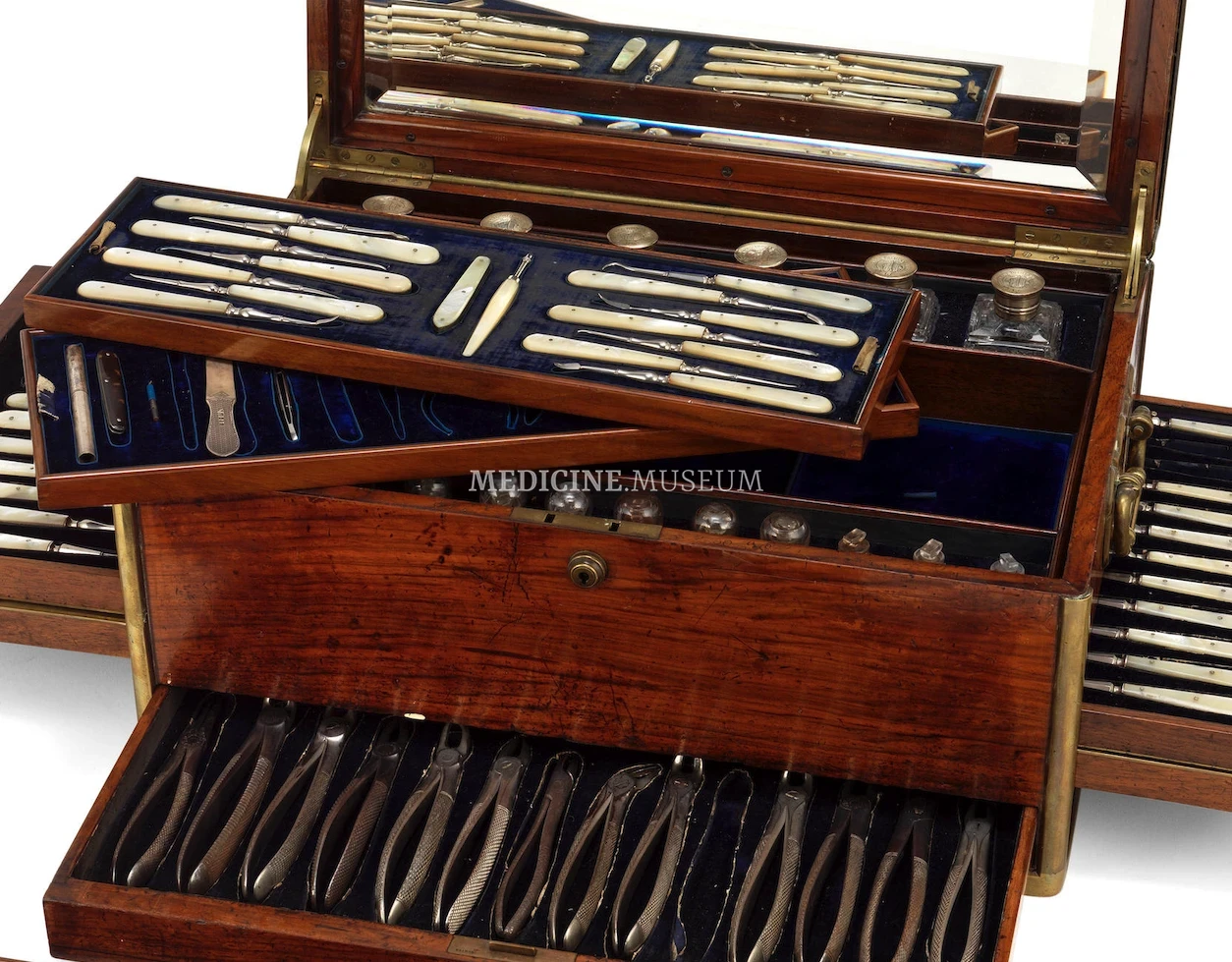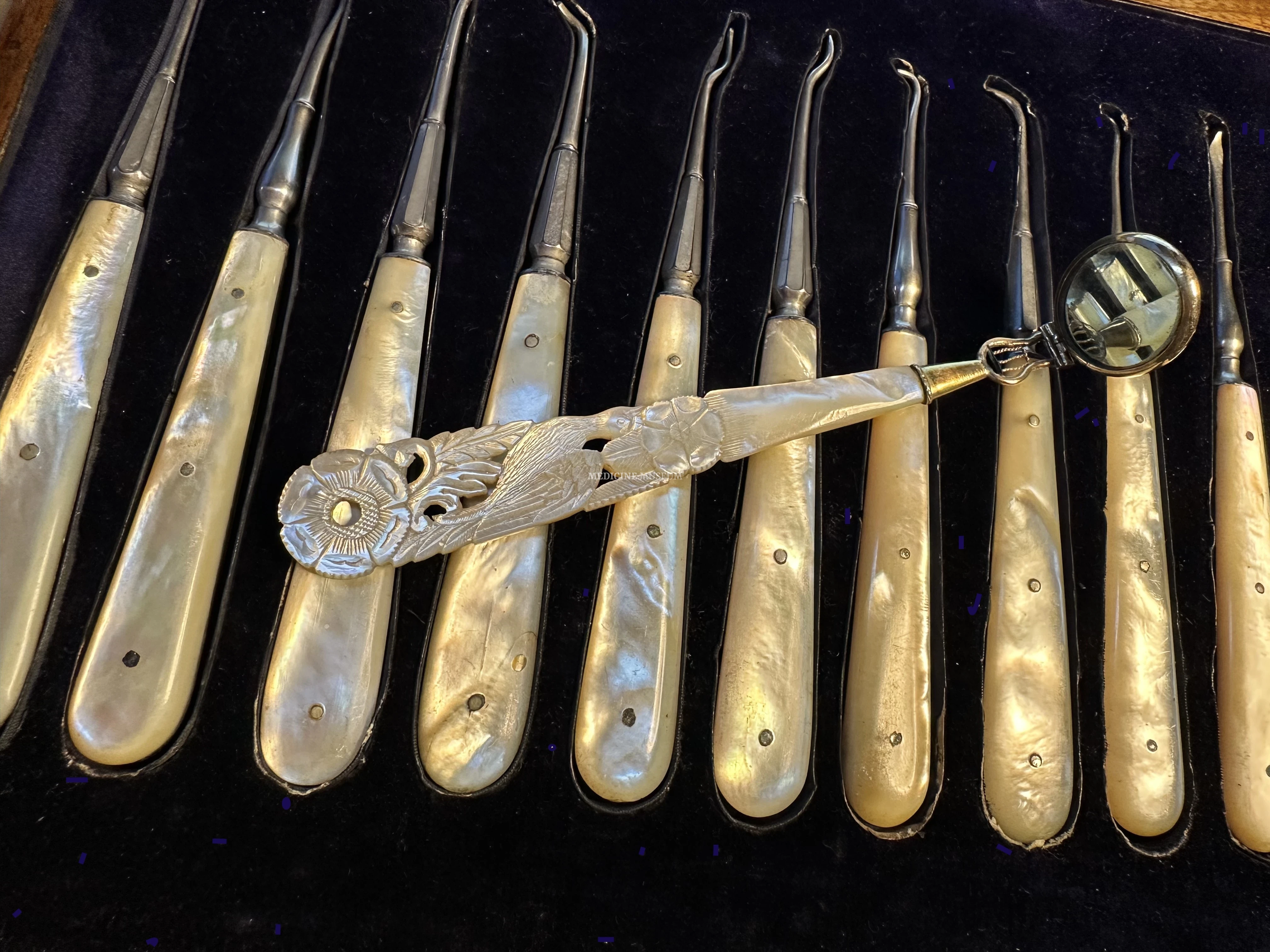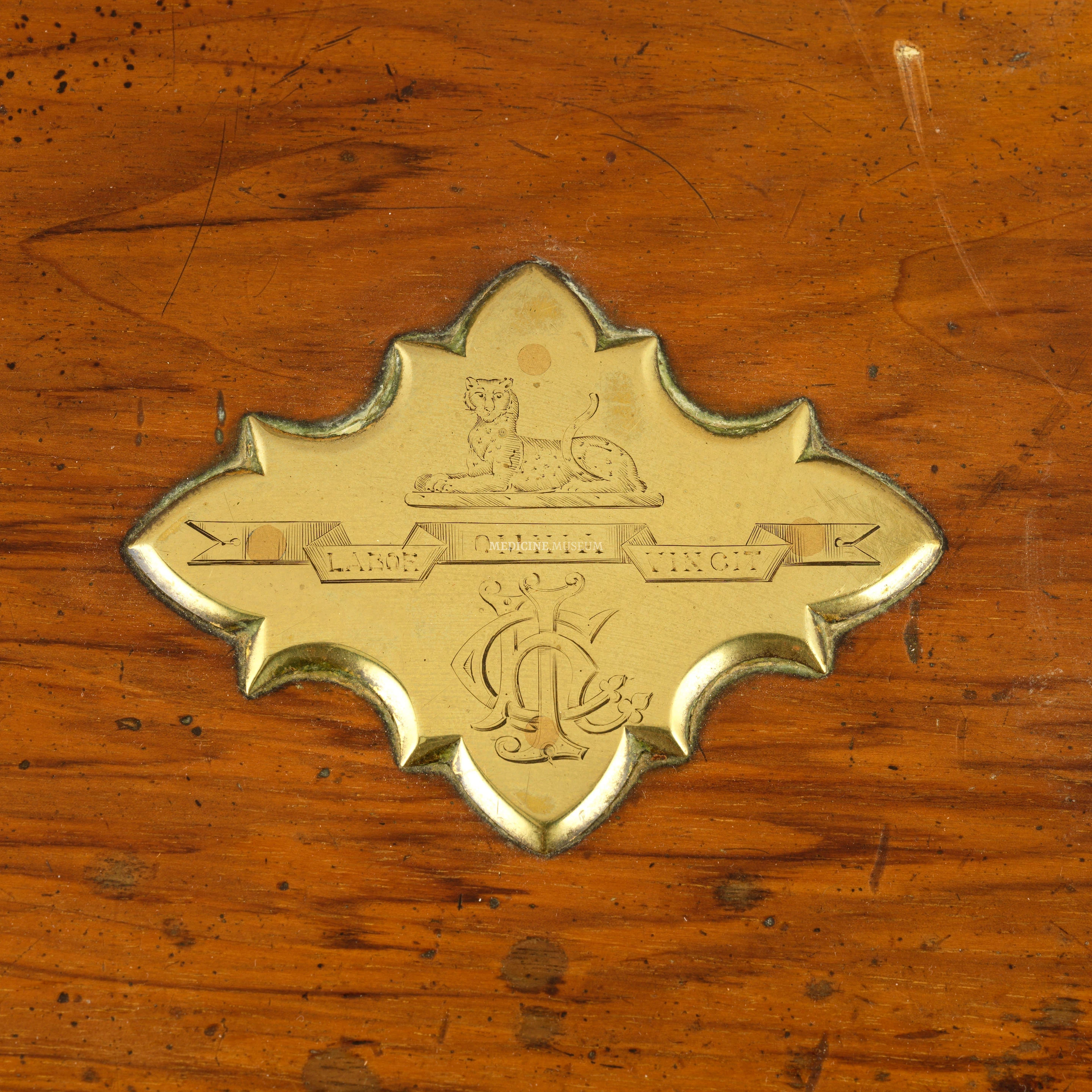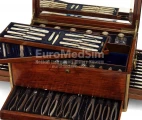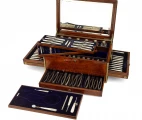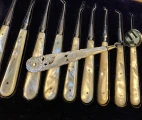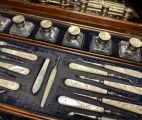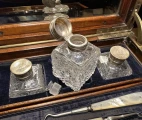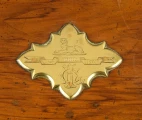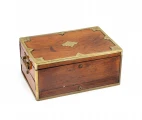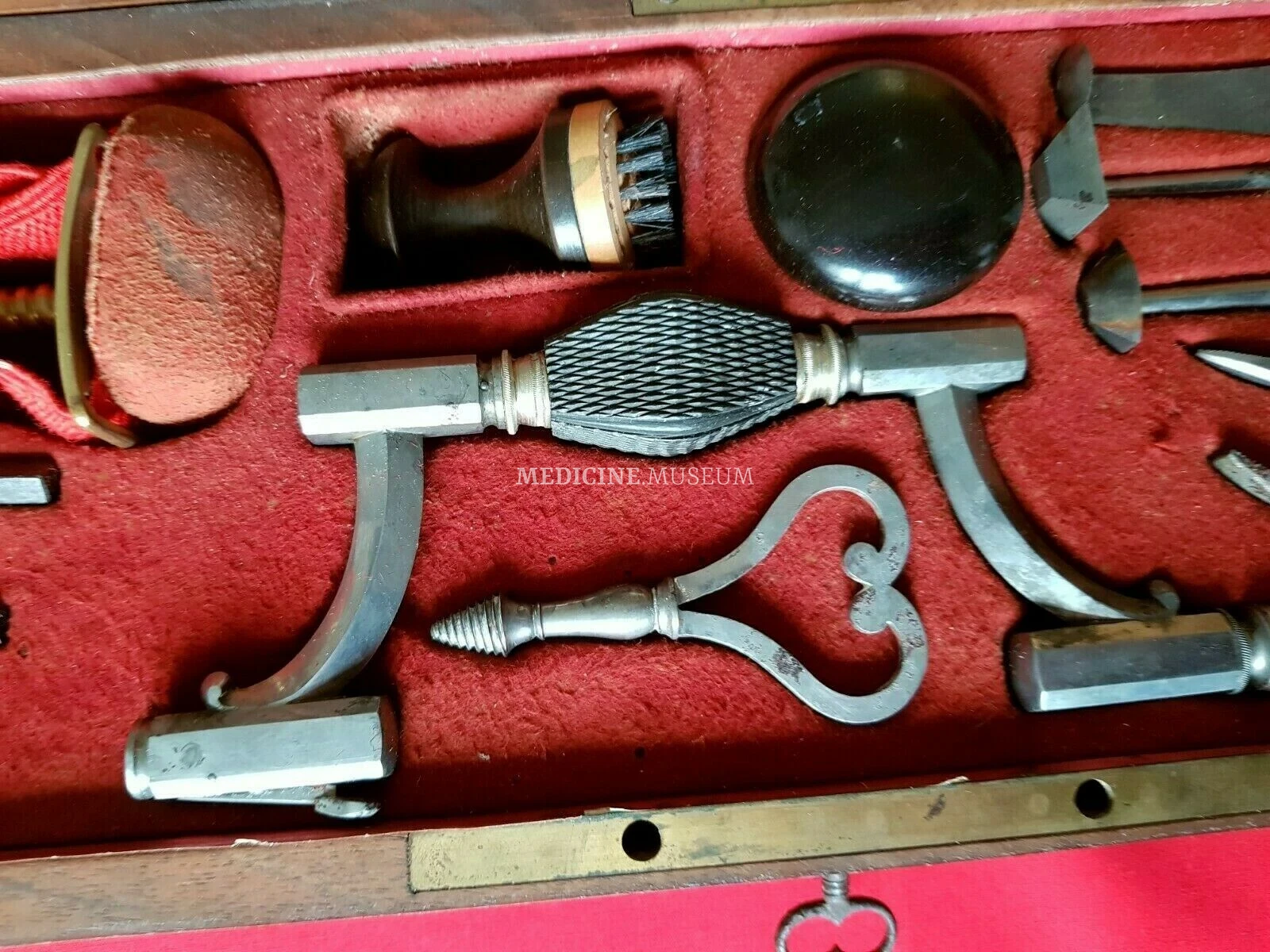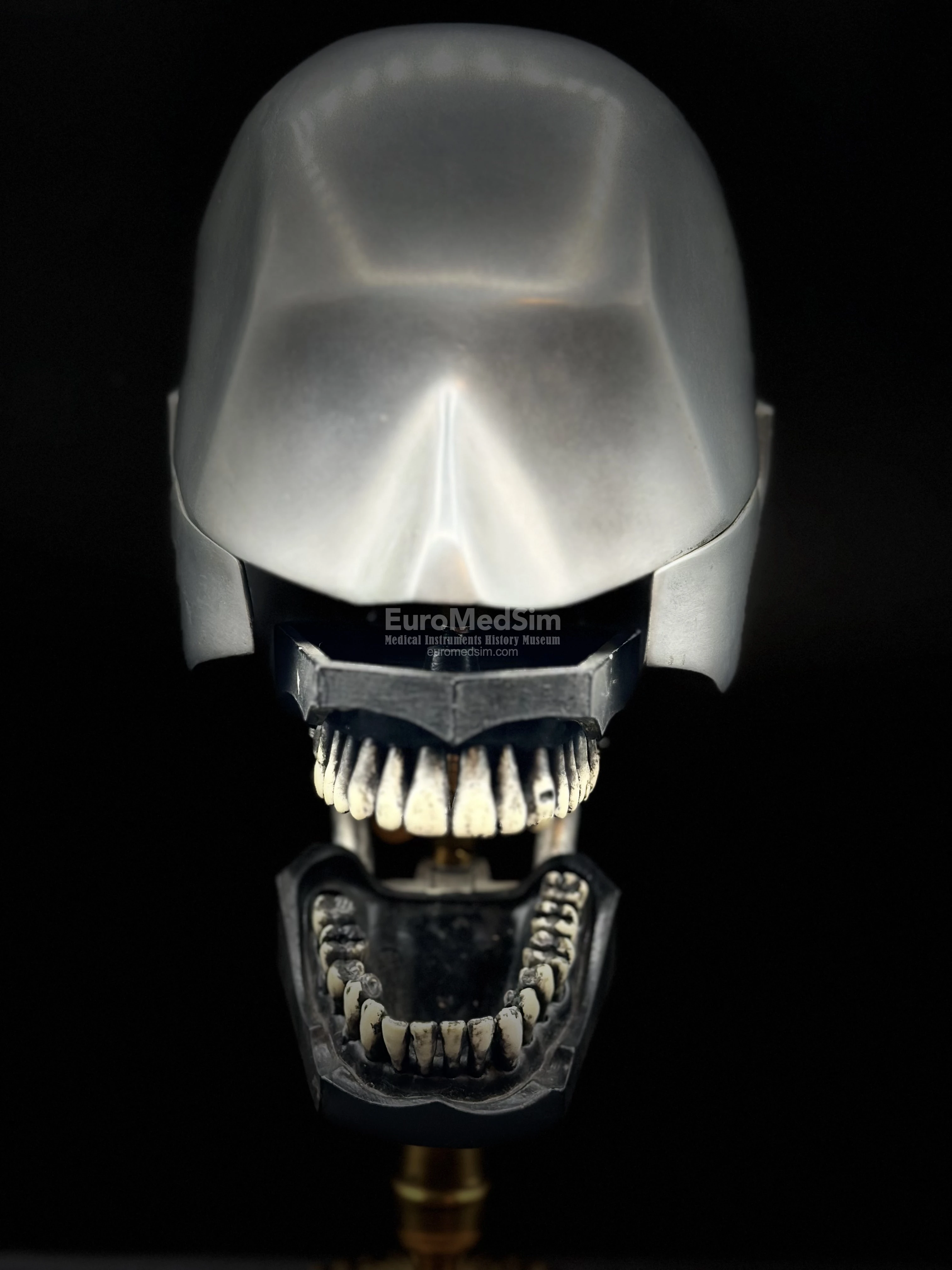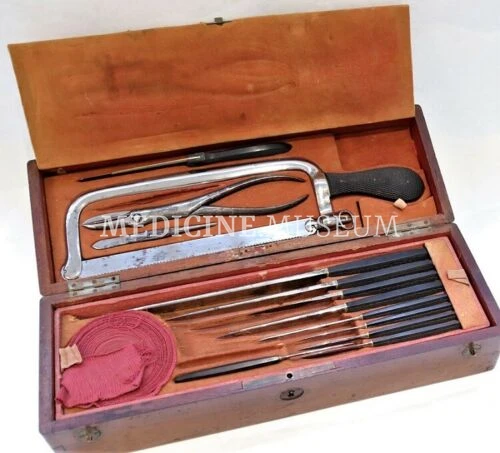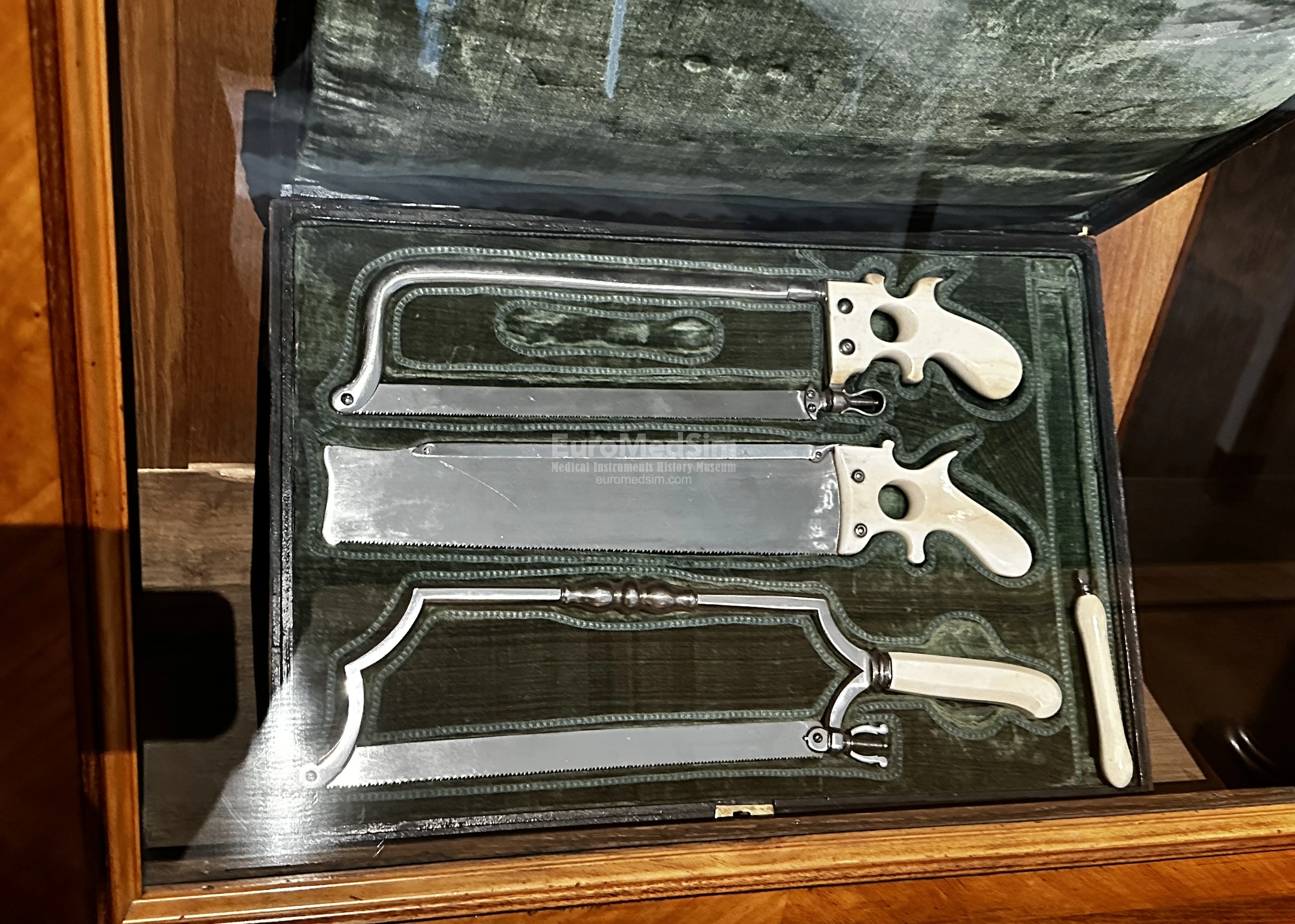Fine Presentation Dentistry and Surgical Chest – England late 19th century
A fine presentation Dentistry and Surgical Chest, English, late 19th century is contained in the walnut brass-bound case, with an engraved brass plaque on the lid with a leopard coat of arms inscribed LABOR OMNIA VINCIT, C.I.H. ("Work conquers all"), with four Bramah locks (see footnote 2) and associated keys for the lid and the front and side compartments. The hinged lid opening to a compartment with a beveled mirror, containing four trays fitted with blue velvet covering lodgements for instruments. The main tray has six cut-glass bottles, each with glass stopper and hinged metal cap bearing the same motto LABOR OMNIA VINCIT, C.I.H., above shallow compartments, one of which contains a Claudius Ash & Sons booklet with dental tin foil leaves; three removable blue velvet fitted trays with lodgements for dental and surgical instruments with mother-of-pearl (nacre) or tortoiseshell handles, some with decorative carved mother-of-pearl handles. The front with a lower drawer opening to a fitted tray for dental forceps, the two sides each with a drawer containing additional instruments and accessories, each with an additional discrete sliding drawer below (a comprehensive inventory available in the footnote 2 below). The walnut case with ornate brass carrying handles on the sides. Some of the instruments are marked: SAVIGNY & CO, LONDON; MAW SON & THOMPSON, SWS, and SMALE.
Dimensions: 51 cm x 23.5 cm x 34.5 cm (20 in x 9 1/4 in x 13 1/2 in), weight 26,9 kg.
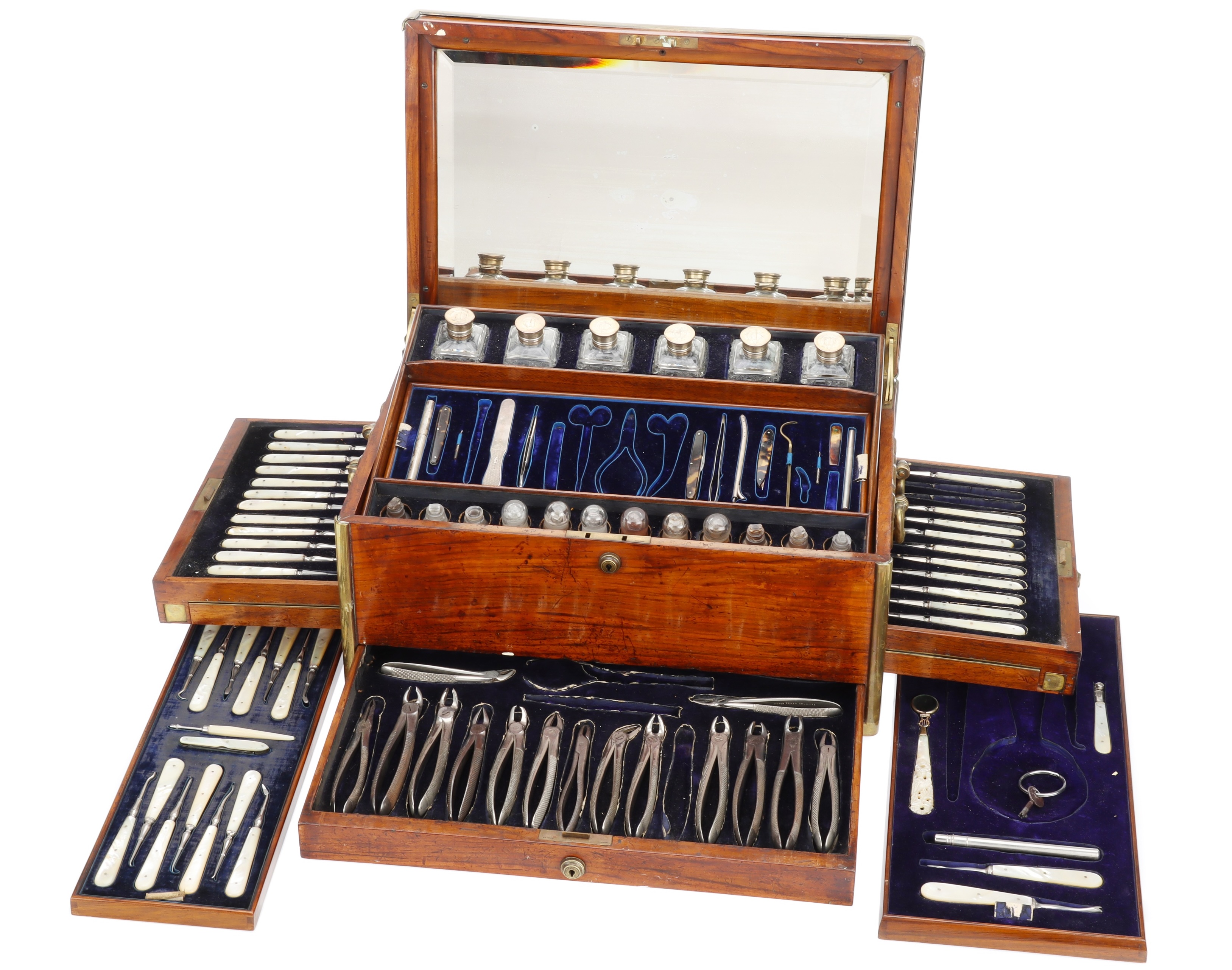
Provenance
Property from a private collection, acquired in the mid-20th century. By repute commissioned and used by a dental surgeon aboard an early Transatlantic luxury liner.
Acquired from the above in 2023 at Bonhams Ltd., London. CITES certificate issued on 08/11/2023.
Reference
For a comparable set refer to the Object No. A75934, at the Sir Henry Wellcome Museum Collection, Science Museum Group, London (see Photos below).

Dental instrument set, United States, 1871-1900, Sir Henry Wellcome Museum Collection, Science Museum Group, London
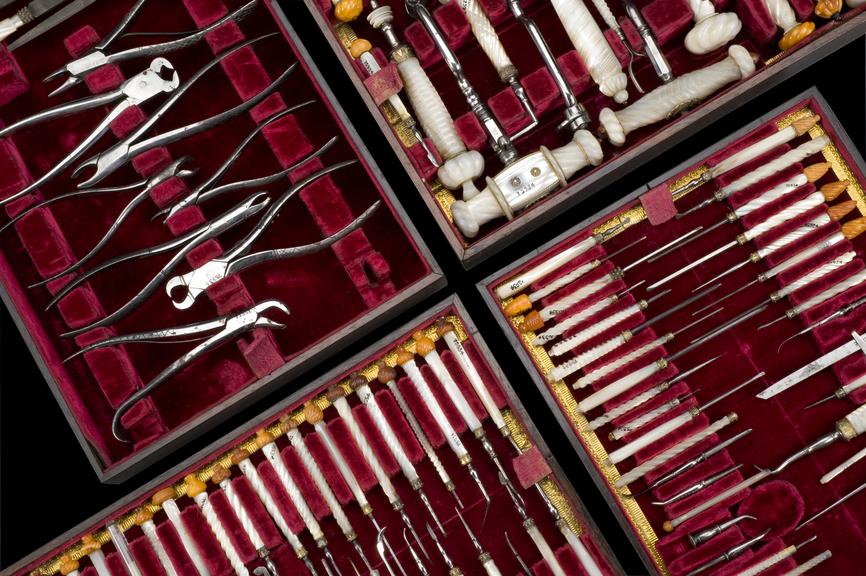
Fragment of the Dental instrument set, United States, 1871-1900, Sir Henry Wellcome Museum Collection, Science Museum Group, London
Another example of a similar dental instrument chest was presented by the Association de Sauvegarde du Patrimoine de l’Art Dentaire (ASPAD) (Association for the Preservation of the Heritage of Dental Art). ASPAD experts date the chest to 1875 based on the quality of the nickel plating on some of the instruments. An illustration of this set of dental instruments can be found in the Ash catalogue of 1886.

Cased dental set by Claudius Ash and Sons London ca. 1875. Source: ASPAD
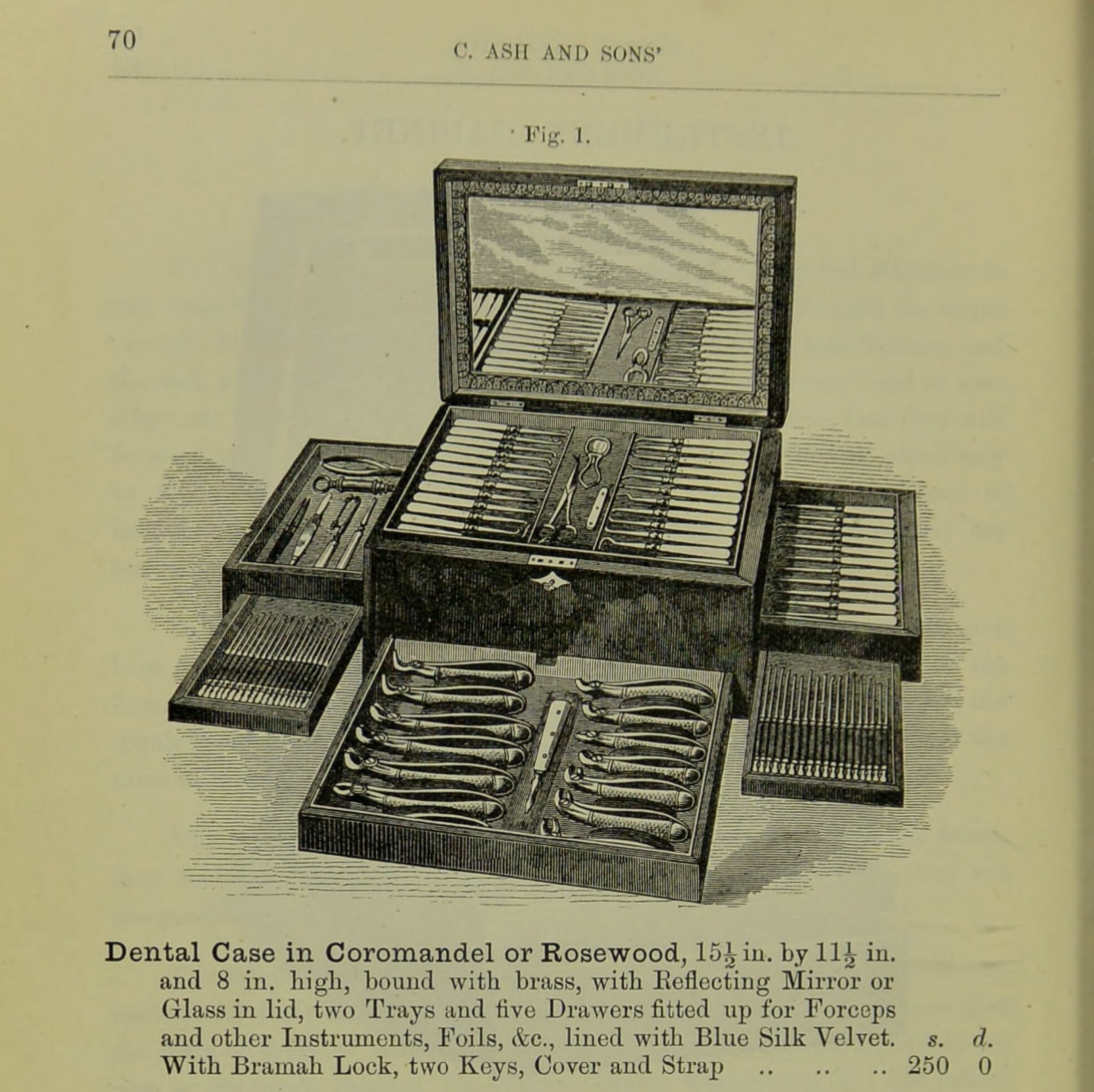
Catalogue of artificial teeth, precious metals, stoppings, dental rubbers, furniture, instruments, laboratory apparatus, tools and sundries manufactured, imported, and sold by Claudius Ash & Sons, 6, 7, 8, & 9, Broad Street, Golden Square, London. 1886, page 70. Source: Wellcome Collection, London
Footnotes
Footnote 1. The chest contents comprising:
- Top compartment: 6 cut-glass bottles with hinged lid with motto and 12 additional glass bottles with glass cups, 3 shallow compartments, one containing a Claudius Ash & Sons dental foil booklet
- Top compartment, upper tray: 5 instruments, 4 with mother of pearl handles, 1 silver tongue depressor with hallmark (3 spaces are empty).
- Top compartment, middle tray: complete with 16 instruments, all with mother of pearl handles.
- Top compartment, lower tray: 13 instruments and accessories, 4 bistouries and knives with tortoiseshell handles, (7 empty spaces).
- Front, lower drawer: 13 steel dental forceps, (1 empty space), and a further 3 steel instruments (3 empty spaces).
- Right side drawer: 10 dental pluggers, all with mother of pearl handles (2 empty spaces).
- Right side drawer, lower tray: twelve steel dental instruments – hand burs and probes.
- Left side drawer: 12 dental pluggers, all with mother of pearl handles.
- Left side drawer, lower tray: 12 steel dental instruments – hand burs and probes.
Footnote 2. Bramah Locks
The Bramah lock refers to a type of lock design invented in 1784 by Joseph Bramah, English engineer and inventor. It is notable for its security features and was considered one of the most secure locks of its time. The Bramah lock is a type of cylinder lock, uses a cylindrical key with precise notches. The key operates a series of sliding wafers inside the lock, which must align perfectly to allow the lock's bolt to be moved. At the time of its invention, the Bramah lock was famed for its resistance to lock picking and was considered unpickable. Bramah was so confident in the security of his lock that he displayed it in his shop window with a challenge offering a reward to anyone who could pick it. The design and concept of the Bramah lock have had a lasting impact on the lock industry. While modern locks have evolved significantly, the fundamental idea of using a key to align internal mechanisms to secure or release a bolt remains central to many contemporary lock designs. The Bramah lock is not only a testament to Joseph Bramah's ingenuity but also an important milestone in the history of lock engineering and security. The company Bramah Locks founded by the inventor still exists today.
